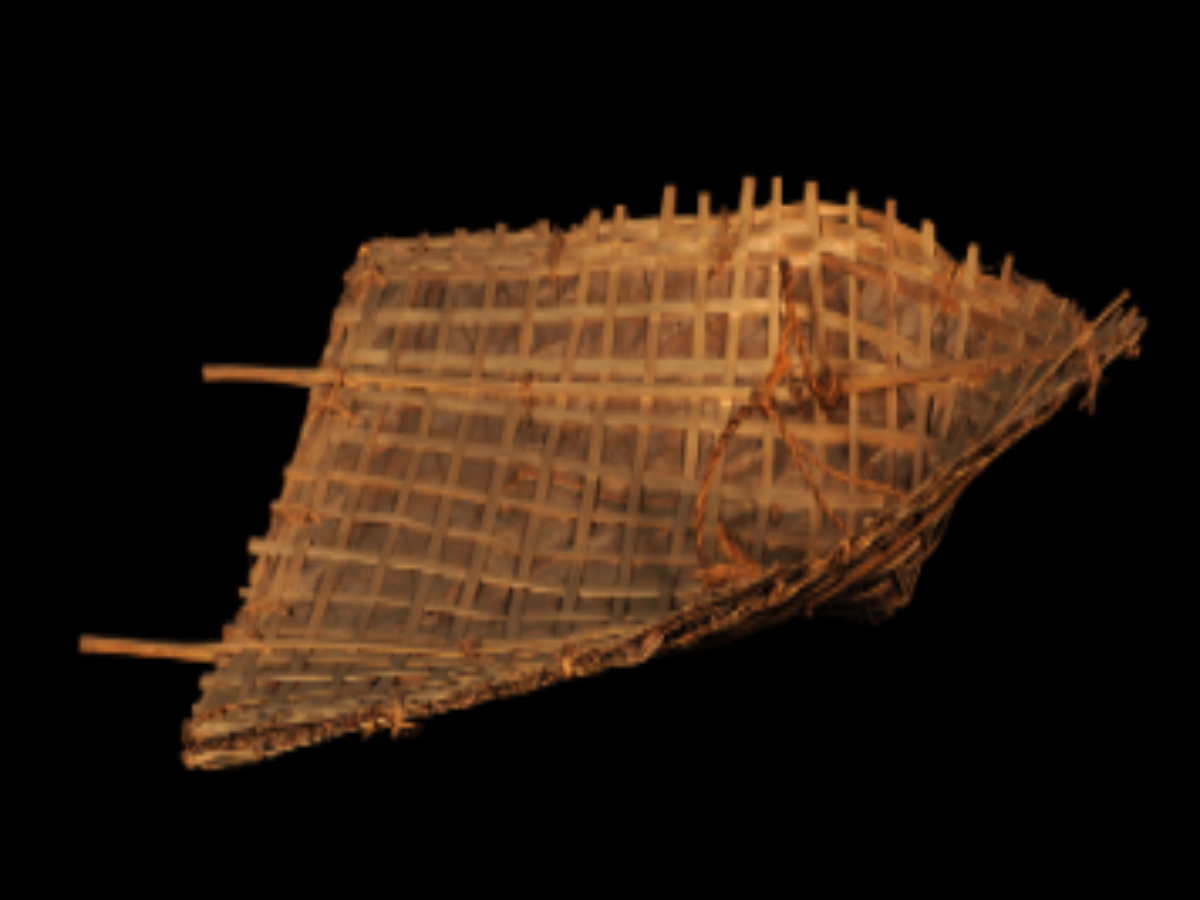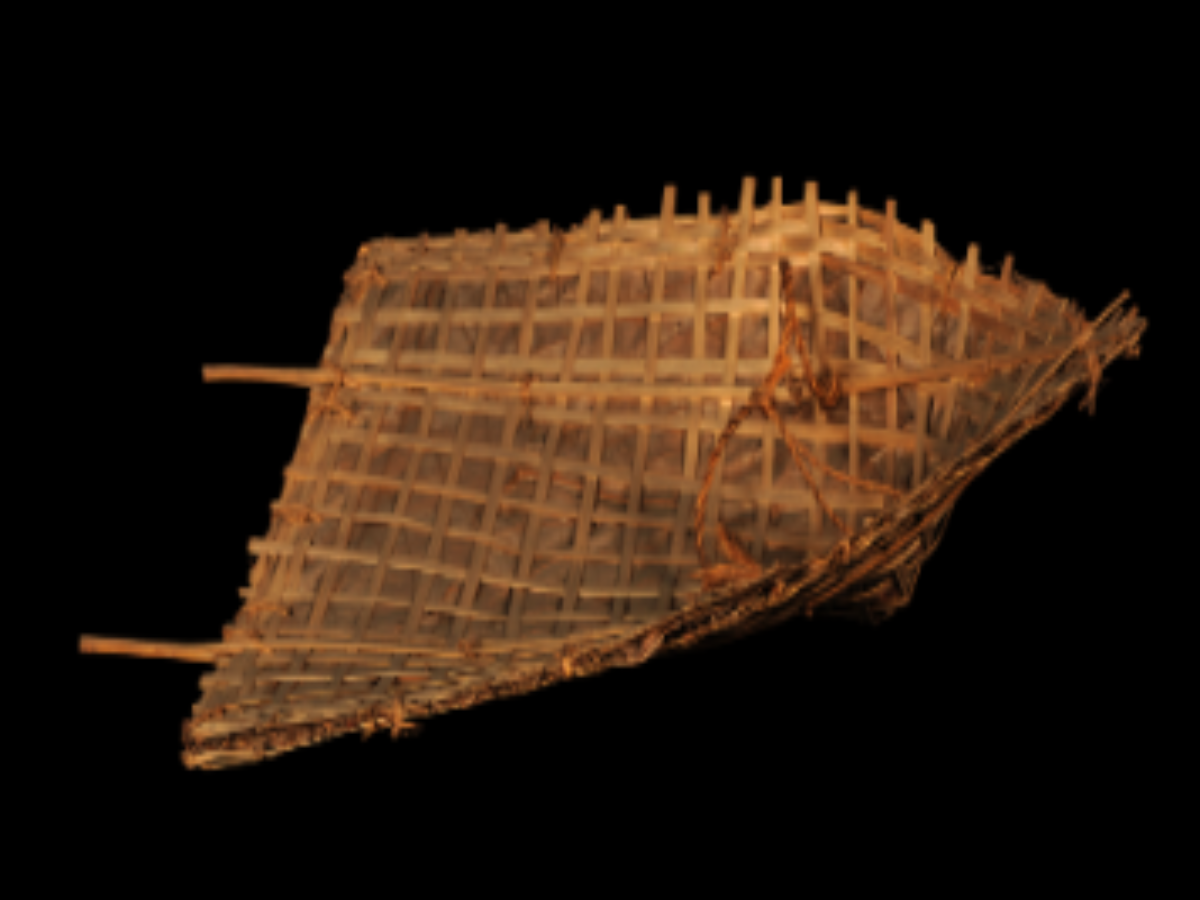State
Tribe Name
Art Type
short description
The traditional rain shield of the Rabha community of Assam is an example of how the two are attached to the environment as well as prudent craftsmanship. This triangular structure solves the huge problem posed by monsoon rains in Assam completely and is made using all natural materials such as bamboo, leaves and jute.The rain shield comprises two tightly joined layers of split bamboo strips, which are put together with precision so that rectangular gaps are formed at regular intervals. The heavy leaves act as a protective coating to these layers, making the shield resistant to water and closed. The combination of leaves and bamboo makes this lightweight, strong, and repels rain effectively.
Thumbnail

Filter Postion
Left
Filter Background
Off
Theme
Filter Header Image

content
Image

description
The traditional rain shield of the Rabha community of Assam is an example of how the two are attached to the environment as well as prudent craftsmanship. This triangular structure solves the huge problem posed by monsoon rains in Assam completely and is made using all natural materials such as bamboo, leaves and jute.The rain shield comprises two tightly joined layers of split bamboo strips, which are put together with precision so that rectangular gaps are formed at regular intervals. The heavy leaves act as a protective coating to these layers, making the shield resistant to water and closed. The combination of leaves and bamboo makes this lightweight, strong, and repels rain effectively.
As an aid, directly at the middle of the ventral side is a twisted jute rope that secures either to hold the shield or to fasten it with the person while traversing in heavy rain. The use of such materials is native and ecological, such as jute and bamboo, which make it more sustainable in living a life by the Rabha.In the past, these shields belonged to Rabha farmers, hunters, and travelers during the months of heavy rainfall. Today, they form one of the most important forms of ethnographic relics, which conserve the tradition of indigenous knowledge and craftsmanship of the Rabhas. This particular rain shield, now preserved in the Indian Museum in Kolkata, speaks volumes of the functional artistry of the tribe and their harmonious relationship with nature.
As an aid, directly at the middle of the ventral side is a twisted jute rope that secures either to hold the shield or to fasten it with the person while traversing in heavy rain. The use of such materials is native and ecological, such as jute and bamboo, which make it more sustainable in living a life by the Rabha.In the past, these shields belonged to Rabha farmers, hunters, and travelers during the months of heavy rainfall. Today, they form one of the most important forms of ethnographic relics, which conserve the tradition of indigenous knowledge and craftsmanship of the Rabhas. This particular rain shield, now preserved in the Indian Museum in Kolkata, speaks volumes of the functional artistry of the tribe and their harmonious relationship with nature.
Image Mode
landscape
promoted
On
Verified
Off
